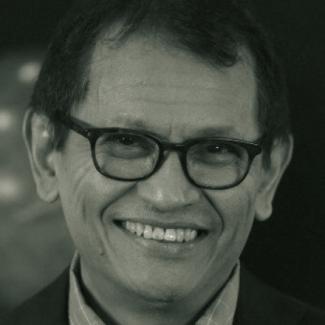SDGs
The sustainability agenda humankind needs
 picture-alliance/NTB/Henrik Laurvik
Gro Harlem Brundtland presenting the report of the World Commission on Environment and Development in London in 1987.
picture-alliance/NTB/Henrik Laurvik
Gro Harlem Brundtland presenting the report of the World Commission on Environment and Development in London in 1987.
“Development is a multidimensional undertaking to achieve a higher quality of life for all people.” This definition was included in “Our common future”, the 1987 report of the World Commission on Environment and Development. The Commission had been established by the UN and was led by Gro Harlem Brundtland, the then prime minister of Norway.
What the term “quality of life” means exactly, is impossible to say, however. How people assess their personal quality of life clearly depends on their individual preferences after all. The things that matter include happiness, self-esteem, respect, dignity, prosperity, personal capabilities and freedom of choices. Academic debates on these interrelated issues, however, typically remained fuzzy and had little impact on public policy.
Nonetheless, work done by Amartya Sen, who won the Nobel Prize in 1998, and others (Nussbaum and Sen, 1993) did make a difference. The approach they took to measuring the quality of life relied on a broad range of indicators, covering economic factors (such as incomes, jobs and productivity), social factors (most importantly health and education) and political factors (like democracy, access and freedom).
The idea is that people’s quality of life depends on important matters. Poor people’s quality of life obviously thus needs improvement in particular. What is required is:
- policies to boost production and equitable distribution, as well as
- efforts to enlarge people’s freedom, options and capabilities, in particular through education and healthcare.
Development indices
Based on the work of Sen and like-minded scholars, experts have been aggregating data for relevant indicators and designing composite development indices. The UN Development Programme has launched several such indices in the past three decades, including the Human Development Index (HDI) and the Multidimensional Poverty Index (MPI). The World Bank came up with the Human Capital Index (HCI).
The double intention of these efforts is:
- to capture emerging development issues (environment, health, gender, personal network et cetera) and
- to better evaluate the process and status of development over time and across different geographical areas.
The expert community appreciates the UNDP indices, and they also get wider international attention. They have an impact on policymaking. Unfortunately, however, the level and growth of gross domestic product (GDP) still remain the most widely used indicators for “development”.
The World Bank, for example, keeps emphasising growth, as the Concept Note for its not-yet published World Development Report 2024 shows. Its message can be roughly summarised as follows: countries should first become integral parts of international supply chains and then focus on innovation. The impacts of distribution issues on social justice do not get much attention.
Bigger or better?
Development and growth are not the same, however. When something grows, it gets bigger, but when something develops, it is supposed to get better. Producing the same level of output with less input is obviously better, especially if the quality of output improves. Achieving higher growth by using more resources, however, is not inherently better. It may actually be worse if it means more pollution and deeper social disparities.
The costs of resource depletion and pollution are often not accounted for in standard cost-benefit analyses. These costs are born neither by the sellers nor the buyers of the goods or services concerned. Economists therefore speak of “negative externalities”. The burden falls on other people or the state as representative of the general public. Environmental destruction, moreover, has an impact on inter-generational justice. Decisions that ignore relevant concerns will leave future generations with less resources available to them than the present generation is enjoying.
Economic growth that depletes resources and harms ecosystems, is unsustainable. Ignoring environmental externalities and social justice gives us a false idea of growth improving people’s quality of life. Therefore, the above-mentioned Brundtland Report emphasised that development must be sustainable. This insight inspired the Earth Summit in 1992.
Sustainable Development Goals
When policymakers’ plans take account of environmental externalities, the long-term results will obviously be better, though short-term growth numbers may be lower. Unfortunately, most office holders tend to want fast success and do not worry much about the distant future. That is the most important reason for progress towards achieving the Sustainable Development Goals (SDGs), which the UN adopted in 2015, remaining rather slow.
A minor, but still relevant reason is that official development assistance – or aid for short – is not up to task. What technocrats call “development cooperation” is too often short-sighted and self-centred.
The 17 SDGs amount to an agenda of concerted efforts to build an inclusive, sustainable and resilient future for humankind on this planet. The three core dimensions of sustainability are economic, social and environmental. That is in line with the UNDP development indices discussed above.
The SDG agenda has some limitations, including the fact that it is not legally binding. Despite some shortcomings, however, it certainly makes sense because it can inspire action. Moreover, it helps us see how far we are lagging behind what is needed.
SDG-related action must speed up. Humankind has no time to lose because global heating and the erosion of biodiversity are causing irreversible harm. Unfortunately, the SDGs have not become the universal agenda that guides governments. Two trends compound this problem:
International organisations are doing too little. Even the multilateral institutions that have officially endorsed the SDGs typically cherry-pick sectors that fit their interests. What is needed instead is cross-cutting action that links the economic, social, and environmental components of sustainable development.
The international community is splintering into blocs, with geopolitical rivalry causing increasing geoeconomic fragmentation. Even in areas where international cooperation had been working fairly well (including trade, foreign direct investment, capital and technology), national-security concerns are increasingly being prioritised.
Evolving thinking
Development thinking has been evolving since the end of World War II. It reflects experiences made and takes into account novel challenges. Development objectives are therefore not fixed permanently, and the strategies, institutions and policies that are meant to achieve them also change over time.
After World War II, many advanced countries focused on reconstruction, and the objective of achieving higher growth reflected their current needs. A set of growth-supporting policies was developed, based on theories and models that fit their situation.
In the 1950s and 1960s, North America, Western Europe and Japan relied on decisive state interventions in markets. When, from the 1970s on, stagnation and inflation began to haunt these economies, the focus shifted to stabilisation and structural adjustment with an emphasis on free market dynamics. In the 1990s, development policies were dominated by liberalisation, deregulation and issues of governance and institutions. Trade and export-oriented strategies gained attention, they were closely associated with growth and structural change.
For a long time, poverty alleviation was largely seen as a trickle-down result of growth. From the early 1990s on, however, the UNDP indices gained some traction. Theories became more complex, and other kinds of evidence were taken into account. The old classical thesis that inequality spurs growth was challenged, as data actually revealed a negative relation between the two. Moreover, the idea took hold that blueprints do not work. Rather than simply following the example of advanced nations, every developing country needs to find its own policy mix to deal with its particular situation. National ownership of policies, moreover, matters very much. Experience shows that, without it, foreign-funded development efforts will fail.
Meanwhile, the adoption of digital technology is increasing fast. It will probably have profound effects on people’s activities and quality of life. New ideas and approaches in development may replace current ones. It is striking, however, that ideas associated with Brundtland and Sen have taken root in both expert debate and political discourse.
Reference
Nussbaum, M., and Sen, A. (Eds), 1993: The Quality of Life. Oxford University Press.
United Nations Brundtland Report, 1987: Report of the World Commission on Environment and Development: Our common future. Available online:
https://sustainabledevelopment.un.org/content/documents/5987our-common-future.pdf
World Bank, 2024: World Development Report 2024. Economic growth in middle-income countries: Concept note. Washington DC.
Iwan J. Azis is an economics professor at Cornell University in the USA and a visiting professor at the University of Indonesia.
http://iwanazis.com/


